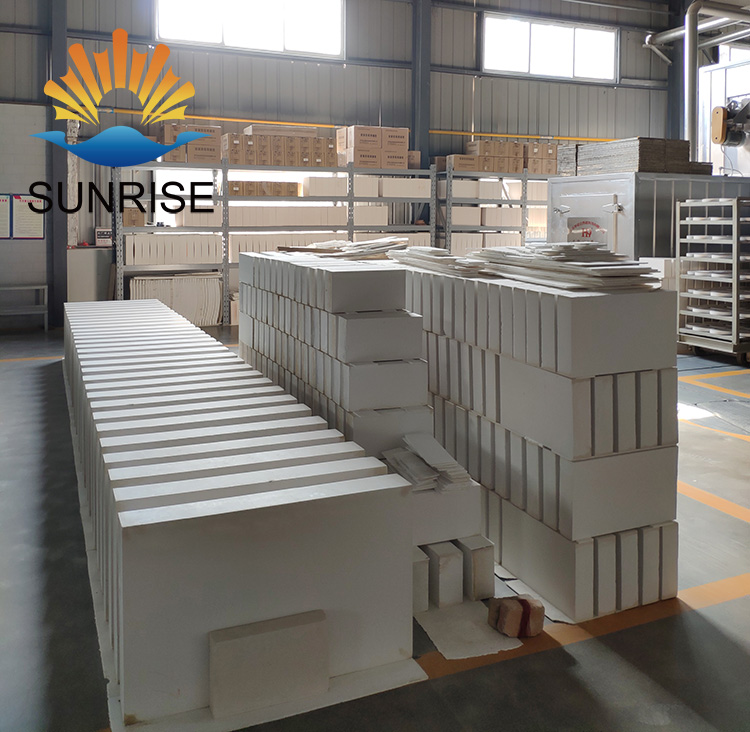Product Search
Quickly find the product you need
Products List
Refractory Knowledge
- Pollution and treatment in the production
- Production Process Methods of Refractory
- Thermal Shock Resistant Fireproof Heat In
- The Use of Mullite Insulation Bricks
- Manufacturing process of fire clay insula
- Pros and cons of lightweight mullite bric
- Classification of mullite insulation bric
- Refractory material production process
- the development of the refractory brick i
- Aggregates Used For the Production of Ins
Products List
- Phone:0086-370-63838939
- Email:sales@sunriserefr.com
- Office Address: No.36 Fengchan Road Of Zhengzhou, Henan, China (Mainland)
Mechanical properties of refractories
Date:2019-12-13 16:26 | From:Zhengzhou Sunrise Refractory | Author:admin
The mechanical properties of refractories refer to the strength, elasticity and plasticity of the material at different temperatures. In general, the mechanical properties of refractory materials are judged by testing indicators such as pressure resistance, bending resistance, abrasion resistance, and soft creep at high temperature.
1.Mechanical properties at room temperature
1.1 Compressive strength at room temperature
It refers to the maximum pressure that the refractory material can bear on a unit area at room temperature. If it exceeds this value, the material is destroyed. If A is the total area under which the sample is compressed, and P is the ultimate pressure required to crush the sample, then: Normal temperature compressive strength = P / A (Pa).
In general, refractory materials rarely cause damage due to static load at room temperature during use. However, the compressive strength at room temperature mainly indicates the sintering of the product and the properties related to its microstructure. The measurement method is simple, so it is a common inspection item to judge the quality of the product.
1.2 Tensile, flexural and torsional strength
When the refractory is used, in addition to compressive stress, it is also subject to tensile, bending, and shear stresses. The main factor affecting the tensile and flexural strength of the refractory product is its structure, and the fine particle structure is conducive to these indicators Of improvement.
1.3 Abrasion resistance
The abrasion resistance of refractories depends not only on the density and strength of the product, but also on the mineral composition, organization, and firmness of the material particles. High compressive strength at room temperature, low porosity, dense and uniform structure, good sintered products always have good wear resistance.
2.High temperature mechanical properties.
2.1 High temperature compressive strength
High temperature compressive strength is the ultimate pressure that a unit cross section can withstand under high temperature. As the temperature rises, the strength of most refractory products increases, among which clay products and high-aluminum products are particularly significant, reaching a maximum at 1000-1200 ° C. This is due to the fact that the viscosity of the melt generated at high temperature is higher than that of the brittle glass phase at low temperature. But the bond between the particles is stronger. As the temperature continues to rise, the intensity drops sharply. The refractory high-temperature compressive strength index can reflect the change of the bonded state of the product under high temperature.

2.2 High temperature flexural strength
High-temperature flexural strength refers to the ultimate bending stress that a unit can withstand under high temperature. It characterizes the material's ability to resist bending moments at high temperatures.
High temperature flexural strength is also called high temperature flexural strength or high temperature fracture modulus. Determine the maximum load that a rectangular parallelepiped sample of a certain size can withstand at a high temperature when it is bent on a three-point bending device.
The high temperature strength of refractory is closely related to its practical use. Especially for evaluating the quality of alkaline direct bonded bricks, high temperature flexural strength is an important property. If the alkali is directly combined with the high-temperature flexural strength of the brick, the resistance to shear stress due to temperature gradient is strong, so the product is not prone to peeling during use. Products with high high-temperature flexural strength will also improve the impact and abrasion resistance of their materials, and enhance slag resistance. Therefore, high-temperature flexural strength is used as an indicator of product strength.
The refractory high-temperature flexural strength index mainly depends on the chemical mineral composition, microstructure and production process of the product.
2.3 High temperature creep
When a material is subjected to a constant load less than its limit at high temperature, plastic deformation occurs. The amount of deformation will gradually increase with time, and even the material will be destroyed. This phenomenon is called creep. Therefore, for materials at high temperatures, their strength cannot be considered in isolation, but temperature and time factors and strength should be considered at the same time. For example, the damage of grid bricks of hot-air stoves that work at high temperatures for a long time is due to the gradual softening of the bricks, resulting in plastic deformation, a significant decrease in strength or even damage. This creep phenomenon of grid bricks has become the main cause of furnace damage.
It is generally believed that the factors affecting high temperature creep are:
1)conditions of use, such as temperature and load, time, atmospheric properties, etc .;
2)materials, such as chemical composition and minerals;
3) microstructure. The material's high-temperature creep curve is divided into three stages. The first stage is creep deceleration (short time); the second stage is uniform creep (minimum creep rate); the third stage is accelerated creep (creep rate Rapid increase).

